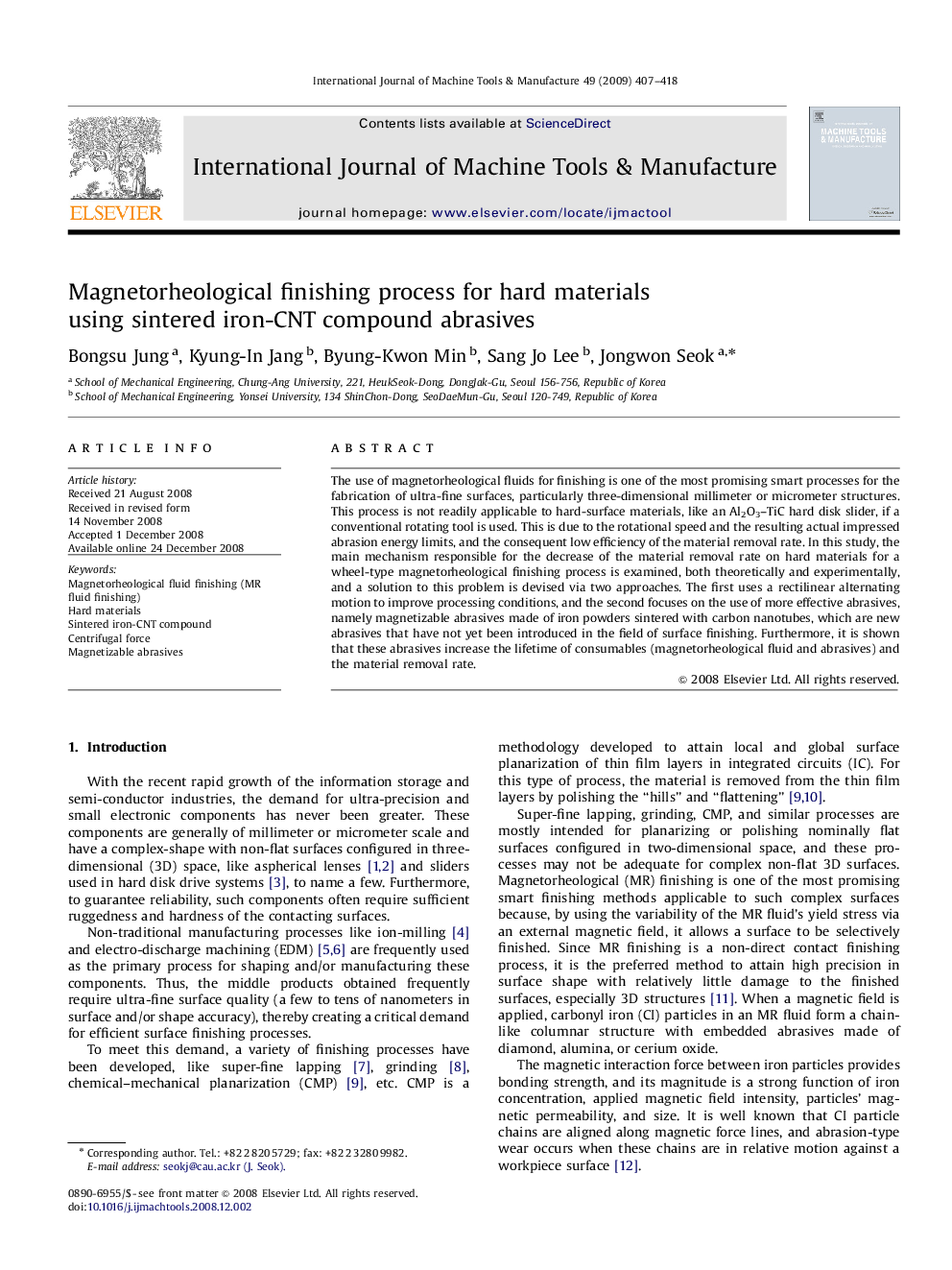| Article ID | Journal | Published Year | Pages | File Type |
|---|---|---|---|---|
| 784559 | International Journal of Machine Tools and Manufacture | 2009 | 12 Pages |
The use of magnetorheological fluids for finishing is one of the most promising smart processes for the fabrication of ultra-fine surfaces, particularly three-dimensional millimeter or micrometer structures. This process is not readily applicable to hard-surface materials, like an Al2O3–TiC hard disk slider, if a conventional rotating tool is used. This is due to the rotational speed and the resulting actual impressed abrasion energy limits, and the consequent low efficiency of the material removal rate. In this study, the main mechanism responsible for the decrease of the material removal rate on hard materials for a wheel-type magnetorheological finishing process is examined, both theoretically and experimentally, and a solution to this problem is devised via two approaches. The first uses a rectilinear alternating motion to improve processing conditions, and the second focuses on the use of more effective abrasives, namely magnetizable abrasives made of iron powders sintered with carbon nanotubes, which are new abrasives that have not yet been introduced in the field of surface finishing. Furthermore, it is shown that these abrasives increase the lifetime of consumables (magnetorheological fluid and abrasives) and the material removal rate.
